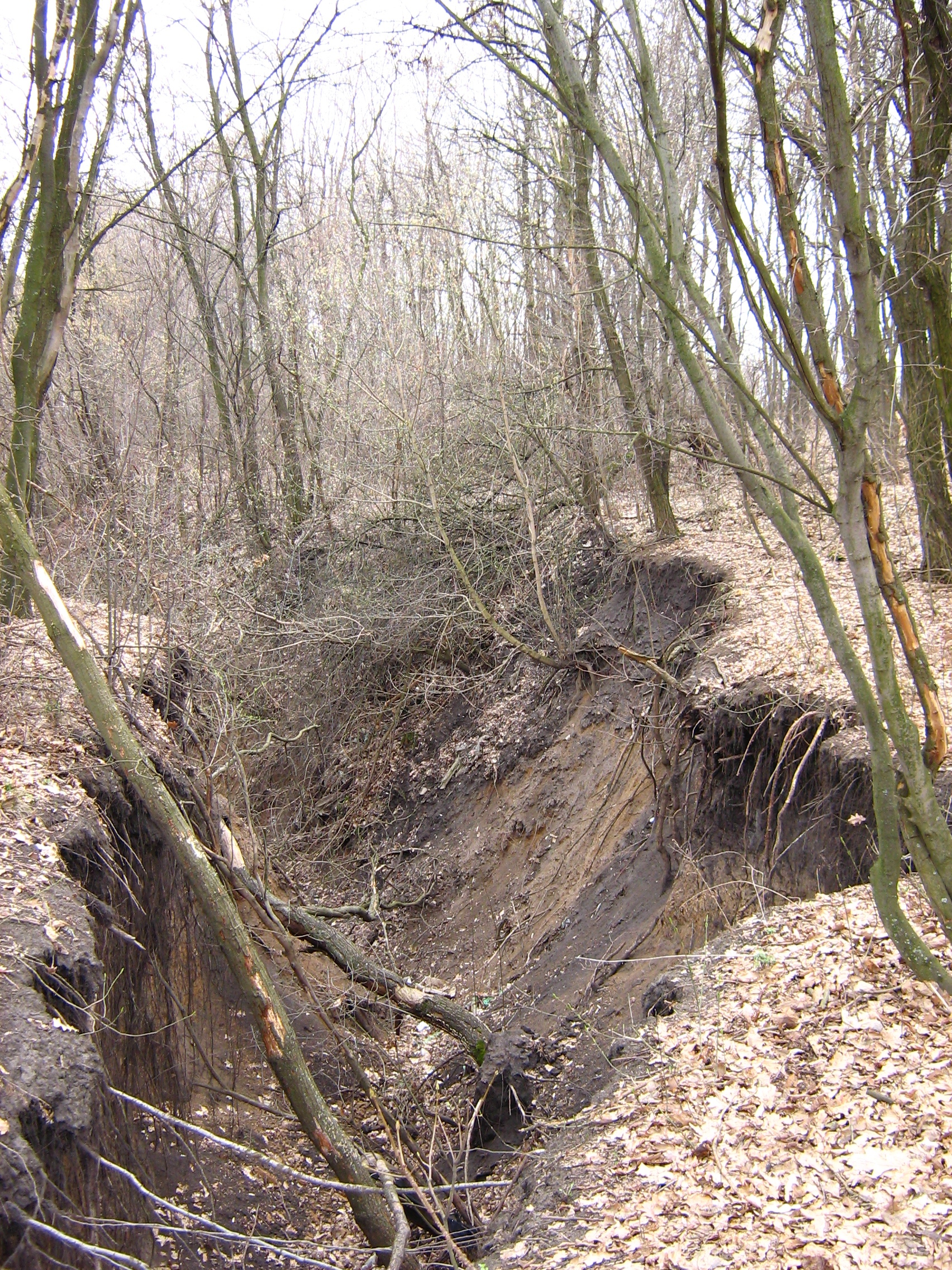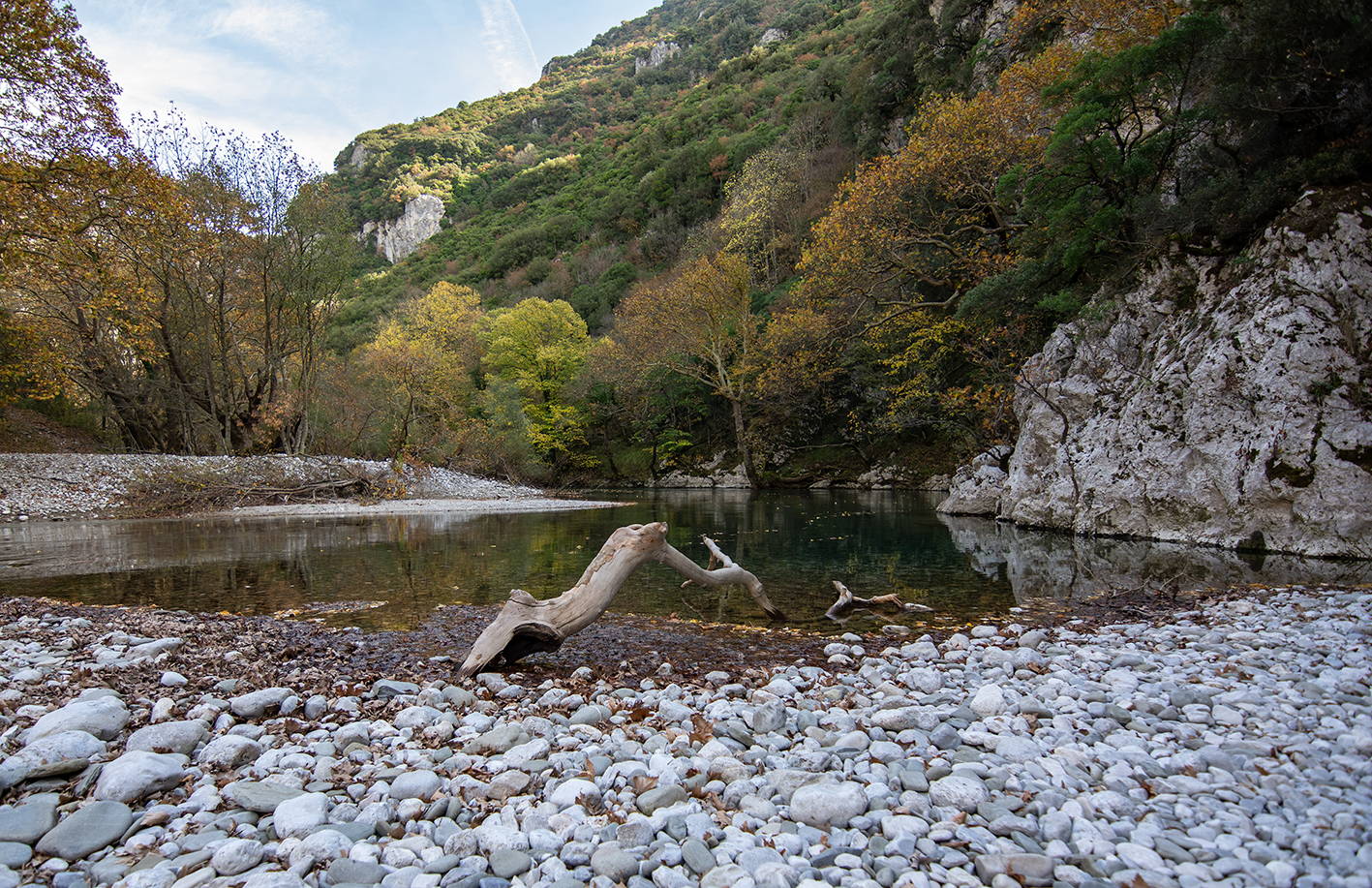|
Vikos Gorge
The Vikos Gorge or Vikos Canyon ( gr, Φαράγγι του Βίκου) is a gorge in the Pindus Mountains of north-western Greece. It lies on the southern slopes of Mount Tymphe with a length of about 32 km, depth ranging from 120 to 1350 m, and a width ranging from 2500 m to only a few meters at its narrowest part. Vikos is listed as the world's "deepest relative to its width" gorge by the Guinness Book of Records among others. Etymology There are a number of views regarding the etymology of the name: *According to Ioannis Lambridis it derives from Slavic and means 'chasm' or 'gorge'. *According to Evangelos Bogas it derives from the Greek βίκος ' stamnos with ears', which denotes the shape of the gorge and the echoes caused by sounds within it. The word was recorded in the lexicon of Hesychius of Alexandria. *According to Konstantinos Amantos it derives from the Greek phytonym βικίον. *According to Konstantinos Oikonomou it derives from an Albanian word ... [...More Info...] [...Related Items...] OR: [Wikipedia] [Google] [Baidu] |
Epirus (region)
Epirus (; el, Ήπειρος, translit=Ípiros, ) is a traditional geographic and modern administrative region in northwestern Greece.Π.Δ. 51/87 “Καθορισμός των Περιφερειών της Χώρας για το σχεδιασμό κ.λ.π. της Περιφερειακής Ανάπτυξης” (''Determination of the Regions of the Country for the planning etc. of the development of the regions, Efimeris tis Kyverniseos ΦΕΚ A 26/06.03.1987'' It borders the regions of Western Macedonia and Thessaly to the east, West Greece to the south, the Ionian Sea and Ionian Islands to the west and Albania to the north. The region has an area of about . It is part of the wider historical region of Epirus, which overlaps modern Albania and Greece but lies mostly within Greek territory. Geography and ecology Greek Epirus, like the region as a whole, is rugged and mountainous. It comprises the land of the ancient Molossians and Thesprotians and a small part o ... [...More Info...] [...Related Items...] OR: [Wikipedia] [Google] [Baidu] |
Aromanian Language
The Aromanian language (, , , or ), also known as Macedo-Romanian or Vlach, is an Eastern Romance language, similar to Megleno-Romanian, Istro-Romanian and Romanian, spoken in Southeastern Europe. Its speakers are called Aromanians or Vlachs (a broader term and an exonym in widespread use to define Romance communities in the Balkans). Some scholars, mostly Romanian ones, consider Aromanian a dialect of Romanian. Aromanian shares many features with modern Romanian, including similar morphology and syntax, as well as a large common vocabulary inherited from Latin. An important source of dissimilarity between Romanian and Aromanian is the adstratum languages (external influences); whereas Romanian has been influenced to a greater extent by the Slavic languages, Aromanian has been more influenced by Greek, with which it has been in close contact throughout its history. Geographic distribution Aromanian is native to Albania, Bulgaria, Greece, North Macedonia, Romania and Serb ... [...More Info...] [...Related Items...] OR: [Wikipedia] [Google] [Baidu] |
Eocene
The Eocene ( ) Epoch is a geological epoch that lasted from about 56 to 33.9 million years ago (mya). It is the second epoch of the Paleogene Period in the modern Cenozoic Era. The name ''Eocene'' comes from the Ancient Greek (''ēṓs'', " dawn") and (''kainós'', "new") and refers to the "dawn" of modern ('new') fauna that appeared during the epoch. The Eocene spans the time from the end of the Paleocene Epoch to the beginning of the Oligocene Epoch. The start of the Eocene is marked by a brief period in which the concentration of the carbon isotope 13C in the atmosphere was exceptionally low in comparison with the more common isotope 12C. The end is set at a major extinction event called the ''Grande Coupure'' (the "Great Break" in continuity) or the Eocene–Oligocene extinction event, which may be related to the impact of one or more large bolides in Siberia and in what is now Chesapeake Bay. As with other geologic periods, the strata that define the start and e ... [...More Info...] [...Related Items...] OR: [Wikipedia] [Google] [Baidu] |
Aoös
The Vjosa (; indefinite form: ) or Aoös ( el, Αώος) is a river in northwestern Greece and southwestern Albania. Its total length is about , of which the first are in Greece, and the remaining in Albania. Its drainage basin is and its average discharge is . The main tributaries are Voidomatis, Sarantaporos, Drino and Shushicë. The river arises in the Pindus mountains of Epirus, Greece, and generally flows northwest. It enters Albania near Çarshovë, and empties into the Adriatic Sea just north of Vlorë. Generally wild and unpolluted, the river is surrounded by the Vikos–Aoös National Park in Greece and the Vjosa-Narta Protected Landscape near its mouth. In December 2020, the Albanian portion of the river was designated a "Managed Nature Reserve" by the government. There is a campaign by the environmentalist groups to designate the whole Albanian part of the course a national park, to guard against the prospective hydroelectric projects. Name The Vjosa is know ... [...More Info...] [...Related Items...] OR: [Wikipedia] [Google] [Baidu] |
Scree
Scree is a collection of broken rock fragments at the base of a cliff or other steep rocky mass that has accumulated through periodic rockfall. Landforms associated with these materials are often called talus deposits. Talus deposits typically have a concave upwards form, where the maximum inclination corresponds to the angle of repose of the mean debris particle size. The exact definition of scree in the primary literature is somewhat relaxed, and it often overlaps with both ''talus'' and ''colluvium''. The term ''scree'' comes from the Old Norse term for landslide, ''skriða'', while the term ''talus'' is a French word meaning a slope or embankment. In high-altitude arctic and subarctic regions, scree slopes and talus deposits are typically adjacent to hills and river valleys. These steep slopes usually originate from late-Pleistocene periglacial processes. Notable scree sites in Eastern North America include the Ice Caves at White Rocks National Recreation Area in southern Ve ... [...More Info...] [...Related Items...] OR: [Wikipedia] [Google] [Baidu] |
Gully
A gully is a landform created by running water, mass movement, or commonly a combination of both eroding sharply into soil or other relatively erodible material, typically on a hillside or in river floodplains or terraces. Gullies resemble large ditches or small valleys, but are metres to tens of metres in depth and width and are characterised by a distinct 'headscarp' or 'headwall' and progress by headward (i.e. upstream) erosion. Gullies are commonly related to intermittent or ephemeral water flow usually associated with localised intense or protracted rainfall events, or snowmelt. Gullies can be formed and accelerated by cultivation practices on hillslopes (often gentle gradient) in farmland, and they can develop rapidly in rangelands from existing natural erosion forms subject to vegetative cover removal and livestock activity. Etymology The earliest known usage of the term is from 1657. It originates from the French word ''goulet'', a diminutive form of ''goule'' which ... [...More Info...] [...Related Items...] OR: [Wikipedia] [Google] [Baidu] |
Monodendri, Ioannina
Monodendri ( el, Μονοδένδρι) is a village in the Ioannina regional unit (Epirus region) in Greece. It is part of the municipal unit of Central Zagori in the Zagori region, and is located north of the city of Ioannina. Monodendri is built at a height of and retains much of the traditional stone-built architecture. History The name "Monodendri" (meaning "lonely tree" or "single tree") came into use only in the beginning of the 19th century. Its origin is in a very large tree, whose remains still existed in 1910. The village was previously considered a neighbourhood of Vitsa.A. Kathareios (Inspector of the 1st educational region of Epirus) ''Report of Inspection of Zagorochoria in 1913'' As with the other Zagori villages, Monodendri enjoyed an extended period of commercial and economic prosperity during the 17th and 18th centuries. There were schools built, churches in the Byzantine style and luxurious stone manors ( el, Αρχοντικά). The first school, the Sch ... [...More Info...] [...Related Items...] OR: [Wikipedia] [Google] [Baidu] |
Canyon
A canyon (from ; archaic British English spelling: ''cañon''), or gorge, is a deep cleft between escarpments or cliffs resulting from weathering and the erosive activity of a river over geologic time scales. Rivers have a natural tendency to cut through underlying surfaces, eventually wearing away rock layers as sediments are removed downstream. A river bed will gradually reach a baseline elevation, which is the same elevation as the body of water into which the river drains. The processes of weathering and erosion will form canyons when the river's headwaters and estuary are at significantly different elevations, particularly through regions where softer rock layers are intermingled with harder layers more resistant to weathering. A canyon may also refer to a rift between two mountain peaks, such as those in ranges including the Rocky Mountains, the Alps, the Himalayas or the Andes. Usually, a river or stream carves out such splits between mountains. Examples of mountain-type ... [...More Info...] [...Related Items...] OR: [Wikipedia] [Google] [Baidu] |
Voidomatis
Voidomatis ( el, Βοϊδομάτης) is a river in the Ioannina regional unit in northwestern Greece, and is a tributary of the Aoös river. The main current sources are located under the village of Vikos. Along its path it converges with other water currents originating from the banks of Tymfi or the Vikos Gorge. It ends close to Konitsa Konitsa ( el, Κόνιτσα; see also names in other languages) is a town of Ioannina in Epirus, Greece. It is located north of the capital Ioannina and near the Albanian border. Northeast of Konitsa lies a group of villages known as the Zagor .... The river has a total length of 15 kilometers. The name Voidomatis (meaning "the eye of the ox"), derives from the fact that oxen have clear blue eyes, like the waters of this river. Also, there is the Slavic etymology: ''Bode–Mat'' which means "good water". Voidomatis has been characterized as one of the cleanest rivers in Europe as it does not face any environmental issues. It crosses ... [...More Info...] [...Related Items...] OR: [Wikipedia] [Google] [Baidu] |
NATURA 2000
Natura 2000 is a network of nature protection areas in the territory of the European Union. It is made up of Special Areas of Conservation and Special Protection Areas designated under the Habitats Directive and the Birds Directive, respectively. The network includes both terrestrial and Marine Protected Areas. History In May 1992, the governments of the European Communities adopted legislation designed to protect the most seriously threatened habitats and species across Europe. The Habitats Directive complements the Birds Directive adopted earlier in 1979 and together they make up the Natura 2000 network of protected areas. The Birds Directive requires the establishment of Special Protection Areas for birds. The Habitats Directive similarly requires Sites of Community Importance which upon the agreement of the European Commission become Special Areas of Conservation to be designated for species other than birds, and for habitat types (e.g. particular types of forest, gra ... [...More Info...] [...Related Items...] OR: [Wikipedia] [Google] [Baidu] |
Vikos, Ioannina
Vikos ( gr, Βίκος), also known as Vitsiko, is a village in the Central Zagori municipal unit in Ioannina regional unit, Greece. It lies at the northern end of the Vikos Gorge The Vikos Gorge or Vikos Canyon ( gr, Φαράγγι του Βίκου) is a gorge in the Pindus Mountains of north-western Greece. It lies on the southern slopes of Mount Tymphe with a length of about 32 km, depth ranging from 120 to 1350 .... A paved path leads from the village to the Voidomatis springs in the gorge.Rough Guide to Greece p.342 References {{coord, 39, 57, N, 20, 42, E, display=title, region:GR_type:city_source:GNS-enwiki Populated places in Ioannina (regional unit) ... [...More Info...] [...Related Items...] OR: [Wikipedia] [Google] [Baidu] |








